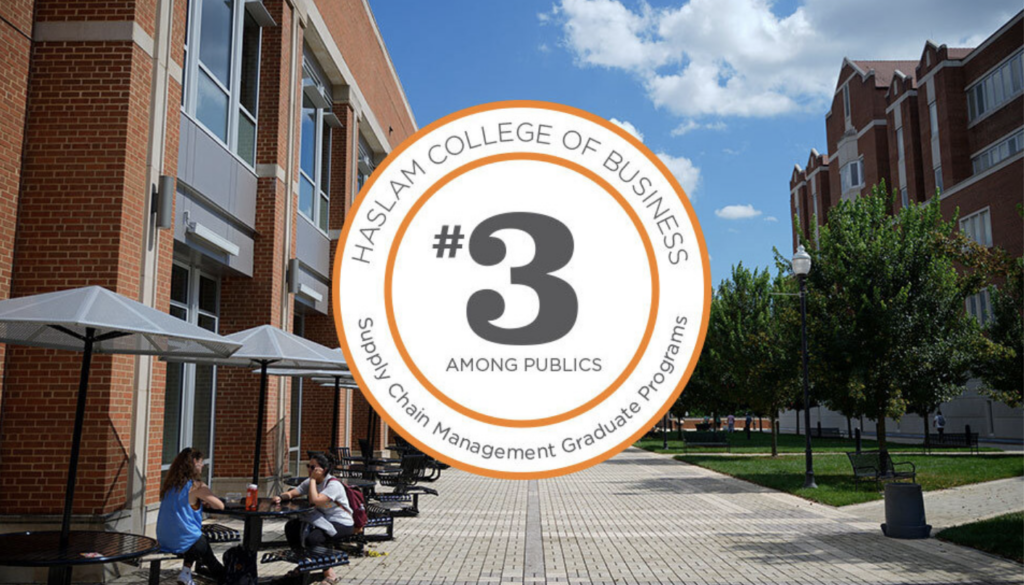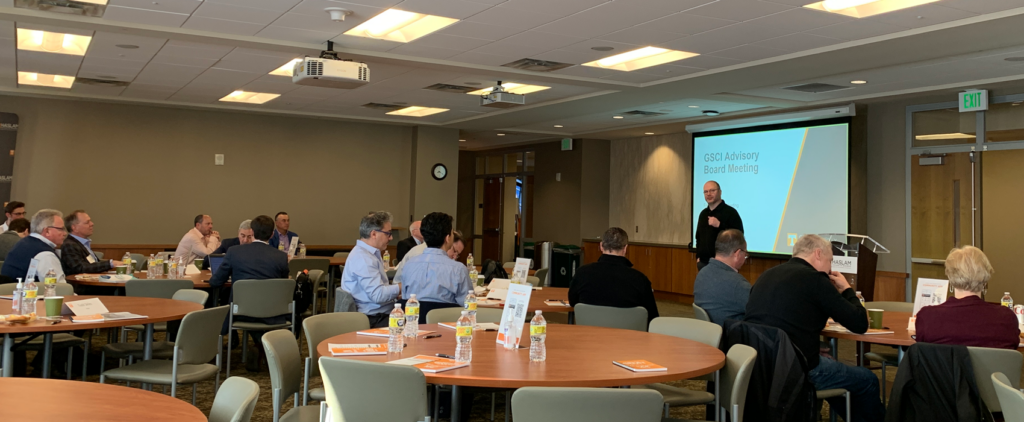Blog
Essential reading from leading researchers and scholars on the latest trends and topics relevant to global supply chain management.

Gen Z is Here. Now What?
This is one of two posts based on sessions from the 2023 Spring Supply Chain Forum, which took place from April 25–27 in Knoxville, Tennessee. Attendees may download the full presentation from the session under Resources in the GSCI app.

Q&A: The Societal Importance of Haslam’s Supply Chain Management (SCM) Research
The Haslam College of Business at the University of Tennessee, Knoxville, ranked fourth in the SCM Journal List’s annual ranking of university supply chain management research production. This marks the eighth consecutive year Haslam has been in the prestigious ranking’s top four, affirming the central role of supply chain management research at the college.

UT Haslam Attains Top Spots in U.S. News Graduate Business Rankings
For the second year in a row, Haslam’s Supply Chain Management graduate coursework ranked No. 3. among public institutions and No. 4 nationally. Haslam’s Business Analytics graduate coursework made its first appearance in the U.S. News ranking, debuting at No. 15 among publics and No. 38 overall. This marks the ninth consecutive year that the supply chain graduate coursework has placed in the top 10. Gartner also ranked the supply chain graduate programs No. 1 nationally last year.

Global shipping is under pressure to stop its heavy fuel oil use fast – that’s not simple, but changes are coming
Most of the clothing and gadgets you buy in stores today were once in shipping containers, sailing across the ocean. Ships carry over 80% of the world’s traded goods. But they have a problem – the majority of them burn heavy sulfur fuel oil, which is a driver of climate change.

From Public Education to Procurement: MS SCM Online Key to Ron Wallace’s Successful Career Transition
This story is the first in a new series, Mapping Success, which shares how the Global Supply Chain Institute and UT’s supply chain management education programs impact the lives and careers of students and professionals in the industry.

The Miner’s Dilemma: Can We Simply Reshore Our Raw Materials Supply?
This post is the second in the series Raw Materials and Natural Resources in the Supply Chain, which explores the understudied, and often misunderstood, processes for sourcing natural resources used as raw materials by the industries that make the products we buy every day. The first post discussed the dilemma farmers face in how to use their land.

Q&A: Bolumole Discusses Transportation Research Board’s Vital Role in American Transportation Policy
Last November, Yemisi “Yem” Bolumole, Ryder Professor in Supply Chain Management in the University of Tennessee, Knoxville’s Haslam College of Business, was selected to join the TRB’s Committee on Impacts of Alternative Compensation Methods on Commercial Motor Vehicle Driver Retention and Safety Performance. In a question-and-answer session, Bolumole explained more about the TRB and her committee’s mission.

The Farmer’s Dilemma: What Do We Do with Our Land?
This post is the first in a new series, Raw Materials and Natural Resources in the Supply Chain, which explores the understudied and often misunderstood processes for sourcing natural resources that are used as raw materials by the industries that make the products we buy every day.

Winter Advisory Board Meeting: SCM Program Growth, Digitalization and the Economy, and Supply Chain Planning
The first Global Supply Chain Institute Advisory Board meeting of 2023 recently took place at the University of Tennessee, Knoxville. The GSCI Advisory Board, composed of senior leaders from Supply Chain Forum partners representing public and private companies of all sizes, provides guidance and direction for the institute.

See and Be Seen: Is There a Business Case for Supply Chain Transparency?
Companies’ desires to achieve greater supervision and control over their supply chains are heightened in the post-pandemic business environment, and are understandable when one considers the business disruptions that have occurred. Whether driven by internal needs for increased control, by customer directives, or by the need to become compliant with emerging regulations, companies are aggressively seeking ways to achieve higher levels of visibility, traceability, and transparency for materials and finished goods, as well as the actors that facilitate their movement through supply chains.